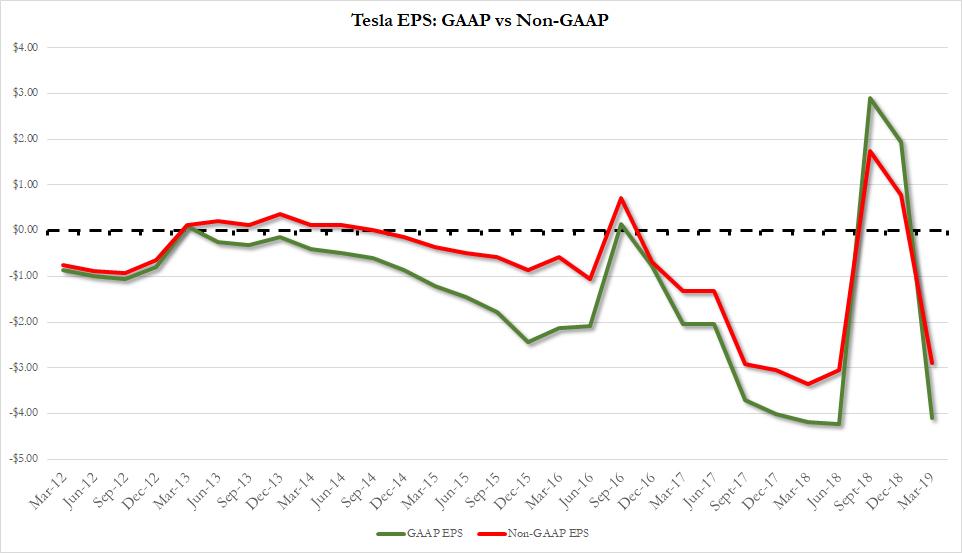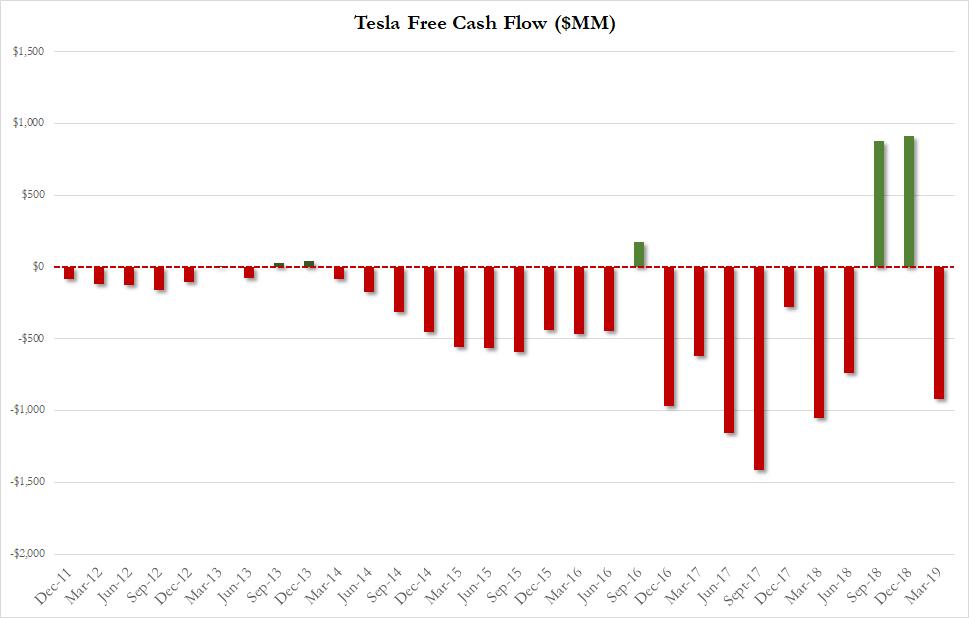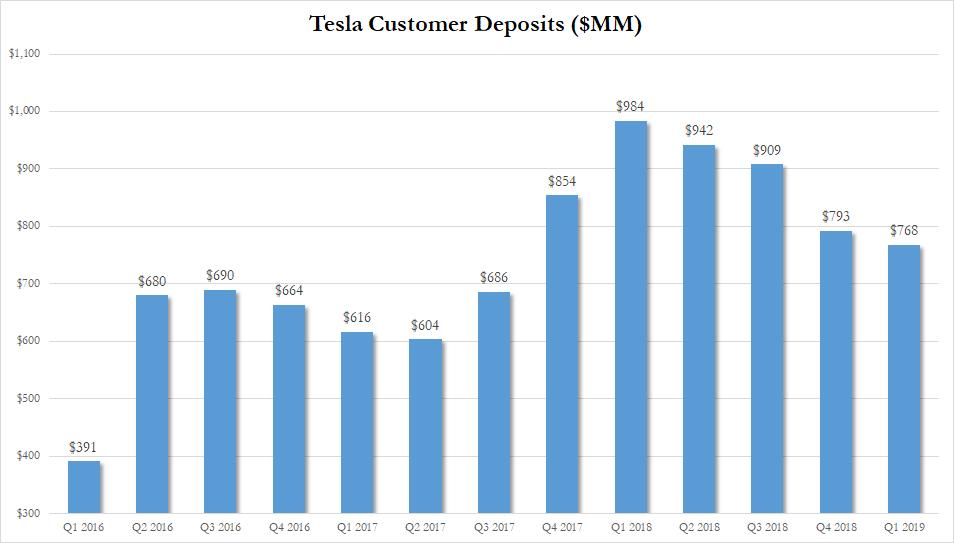Following much confusion about its business model (especially after Tesla announced via Twitter on Tuesday night that it is changing its auto line up yet again, with its flagship Model S and Model X SUV now returning with standard range versions which were canceled in January, while once again lowering prices), and growing fears about flagging end-user demand for its products after the company reported dismal Q1 deliveries with just 12,100 combined model S and X deliveries the lowest total since 2015, investors – especially the shorts who have been piling into Tesla recently, with short interest as a percentage of free float at almost 24% of shares outstanding as of yesterday’s close – were keenly waiting for what Tesla would report for its Q1 earnings and how it would guide for the immediate future.
And they waited… and waited… because while traditionally Tesla had reported earnings shortly after 4pm Eastern, and specifically these were the last 9 times the earnings release was published:
- 4:19ET
- 4:29ET
- 4:14ET
- 4:11ET
- 4:13ET
- 4:18ET
- 4:12ET
- 4:09ET
- 4:18ET
… this time Tesla waited until well past an hour after the usual release time, or 5:13pm to be specific, to publish the report, perhaps so that investors would have no time to actually read and digest what would be a disaster, it and formulate questions ahead of the 5:30pm earnings call, a move that is beyond amateur hour.
And sure enough, the earnings were indeed a disaster with the company reporting a loss of $2.90 in the quarter, more than double the estimated $1.30 share, on dismal revenue of just $4.54 billion, also far worse thanthe $4.84 billion expected. The EPS, charted, was clearly a disaster.
Here are some of the other key highlights via Bloomberg:
- Reaffirms Guidance of 360k to 400k Deliveries in 2019
- Says May Produce 500k Vehicles Globally in 2019
- Targets 25% Adj Gross Margin on Model S, Model X, Model 3
- 1Q Cash & Cash Equivalents $2.20B
- Says Expects Order Rate to Improve Throughout Year
Speaking of the company’s liquidity situation, TSLA’s cash declined by what may be a record $1.6 billion, with free cash flow (cash from operations less capex), coming it at a whopping $920 million, meaning that TSLA burned $10 million in cash every day.
What is curious is that Tesla’s cash burn would actually have been far worse because while the company reported Q1 capital expenditure of $279.9 million, the estimate was for nearly double that or $508.2 million, suggesting the company once again mothballed various expansion projects to mitigate the cash burn.
Going back to core ops, Tesla reaffirmed its guidance from last quarter for 360,000 to 400,000 deliveries in 2019, though it notes “aggressive” internal goals of 500,000 production if the Shanghai factory comes online in time. Of course, since these projections are virtually impossible to hit after the disastrous Q1 deliveries, expect Tesla to cut guidance just ahead of the next earnings release, or the one right after.
Amusingly, gor Q2, Tesla says it will delivery between 90,000 and 100,000 vehicles. It’s biggest quarter so far was Q4 with 90,700 delivered. This is a reaffirmation of demand.
Commenting on the results, Musk said in the letter that “as a result of Q1 pricing actions taken on Model S and Model X, we incurred net $121 million loss for increases in the assumed forecasted return rates for cars sold under our Residual Value Guarantee and Buy Back Guarantee programs, as well as inventory write downs for used and service loaner inventory.” Hardly a glowing endorsement for the residual value of second hand Teslas.
Looking at the all important demand number, Tesla’s customer deposits slumped once again, dropping to $768 million from $793 million in Q4, the lowest number since Q3 2017.
Developing
via ZeroHedge News http://bit.ly/2Vn7uBY Tyler Durden


